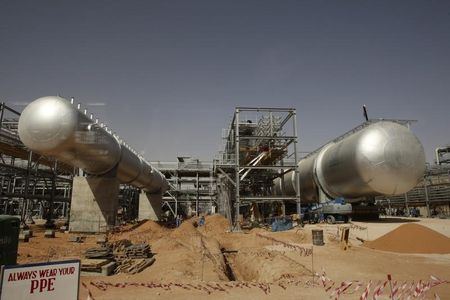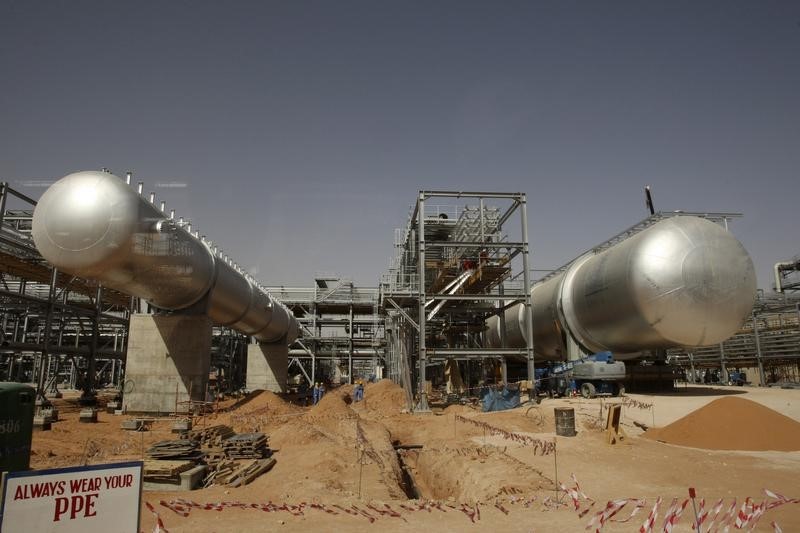Commodities
U.S. crude oil hits year high, stoking inflation fears


© Reuters.
The U.S. benchmark has achieved a record high for the year, with prices exceeding $90 per barrel on Friday, September 15, 2023. This increase accompanies a notable rise in diesel costs, adding to the ongoing inflationary pressures felt by consumers. The October contract for West Texas Intermediate crude settled at $90.77 a barrel, marking the highest front-month price since November of the previous year. The primary driver behind this surge is the anticipation of supply constraints, following reports from the Organization of Petroleum Exporting Countries (OPEC) about a potential supply deficit in Q4.
Earlier this week, OPEC and the International Energy Agency released monthly reports predicting a global oil supply deficit in Q4. This forecast comes after Saudi Arabia and Russia decided to extend their voluntary crude production cuts until the end of the year.
High oil prices can impact various sectors of the economy, reminiscent of the effects seen in March and April last year after the onset of the Russia-Ukraine war in February 2022. Despite this historical precedent, experts suggest that this time around, the effects might not be as severe.
Inflation escalated to 3.7% in August, surpassing the Federal Reserve’s target rate of 2%. This spike in oil prices could challenge expectations of inflation returning to target levels. Consumers are already shouldering higher energy costs due to rising gasoline prices. On Friday, regular gasoline averaged $3.835 a gallon, an increase from $3.808 a week ago and up 15.4 cents from a year ago.
However, gasoline prices might ease towards the end of this year due to cheaper components that refiners and blenders can incorporate into motor fuel. Most U.S. states transitioned to higher Reid vapor pressure gasoline on Friday, moving away from summer-grade fuels and allowing for the inclusion of less expensive components like butane, naphtha, and natural gasoline in finished motor fuel.
Despite this transition, current U.S. fuel prices at the pump are over $1 a gallon higher than when domestic crude oil first surpassed $90 in the fall of 2007. This increase is largely attributed to significantly higher refinery margins and increased profits for gasoline distributors and retailers.
Diesel prices have also seen a significant rise, with average retail prices reaching $4.5515 a gallon on Friday, the highest since February. These rising costs have broad economic implications, affecting not only the price of manufactured goods but also food prices. These rising costs were a significant factor in driving wholesale inflation higher in August.
In addition to oil and diesel, the cost of jet fuel has also risen due to increasing labor costs, pushing airfares higher in Q3. While travel demand remains robust for now, it may fluctuate in Q4.
By year-end, Saudi Arabia is expected to have withheld more than 180 million barrels of oil from the global market since July. This figure is comparable to the volume that the U.S. released from its Strategic Petroleum Reserve following Russia’s invasion of Ukraine in 2022.
As we move into Q4, there are three potential tailwinds for oil: increased demand from China, a stronger U.S. dollar, and weather-related demand spikes. If these factors align, oil prices could continue their upward trend, exerting further pressure on inflation.
This article was generated with the support of AI and reviewed by an editor. For more information see our T&C.
Commodities
Oil prices rise; U.S. crude inventories plunge, Russia-Ukraine truce eyed
Commodities
India’s Reliance to stop buying Venezuelan oil over US tariffs, sources say
Commodities
Oil prices climb on Venezuela supply worries

 Forex3 years ago
Forex3 years agoForex Today: the dollar is gaining strength amid gloomy sentiment at the start of the Fed’s week

 Forex3 years ago
Forex3 years agoUnbiased review of Pocket Option broker

 Forex3 years ago
Forex3 years agoDollar to pound sterling exchange rate today: Pound plummeted to its lowest since 1985

 Forex3 years ago
Forex3 years agoHow is the Australian dollar doing today?

 Cryptocurrency3 years ago
Cryptocurrency3 years agoWhat happened in the crypto market – current events today

 World3 years ago
World3 years agoWhy are modern video games an art form?

 Commodities3 years ago
Commodities3 years agoCopper continues to fall in price on expectations of lower demand in China

 Economy3 years ago
Economy3 years agoCrude oil tankers double in price due to EU anti-Russian sanctions























